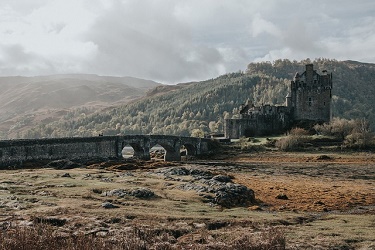 If you had been around in 1902 and invited to the coronation of Queen Victoria’s son Edward VII (“Bertie” to his friends), you would have heard the premier performance of Sir Hubert Parry’s setting of Psalm 122 from the Church of England’s Book of Common Prayer, always known by its opening words: “I Was Glad.”
If you had been around in 1902 and invited to the coronation of Queen Victoria’s son Edward VII (“Bertie” to his friends), you would have heard the premier performance of Sir Hubert Parry’s setting of Psalm 122 from the Church of England’s Book of Common Prayer, always known by its opening words: “I Was Glad.”
Psalm 122 in the Jewish Bible is one of a group of Psalms (songs) usually called “Psalms of ascent.” Scholars disagree on what exactly the word “ascent” refers, but the idea that’s usually listed first is that these psalms were sung by pilgrims on their way to Jerusalem to participate in various festivals in the Jewish calendar. Jerusalem is built on several hills (one of which had the name “Zion,” sometimes used to refer to Jerusalem as a whole), so you would indeed be ascending as you made your approach into the city.
How did a song about going to a Jewish festival end up being applied to a British coronation? Good question. Someone must have decided it would make a nice statement as a new monarch was crowned, and the tradition persisted. Some version has been performed at the coronation of every British monarch since that of Charles I in 1625. (You may remember that Charles I ended up being beheaded, so he was perhaps not the most auspicious of monarchs to first use the piece.)
I have no information about the pre-Parry settings, but here’s the text he used, which consists of verses 1-3 and 6-7 from the psalm:
I was glad when they said unto me, We will go into the house of the Lord
Our feet shall stand in thy gates, O Jerusalem
Jerusalem is builded as a city that is at unity in itself:
O pray for the peace of Jerusalem: they shall prosper that love thee
Peace be within thy walls, and plenteousness within thy palaces.
You’ll note that there’s a parallel being drawn between Israel and England, but only in a symbolic or comparative sense: just as ancient Israelites rejoiced when they gathered in the Tempe for national celebrations, so modern Britons can rejoice as they gather to crown a new ruler. Both countries desire(d) peace and prosperity, both to themselves and to their allies.
Funny sidenote about the premier:
At the first performance of Parry’s arrangement at the 1902 coronation, the director of music, Sir Frederick Bridge, misjudged the timing and had finished the anthem before the King had arrived, having to repeat it when the right moment came. Bridge was saved by the organist, Walter Alcock, who improvised in the interim.(Wikipedia)
Always great to be remembered as a quick-witted improviser!
As for Parry himself, he was forced by his father to work in the insurance business. By age 35, though, in 1883, Parry had become a teacher at the Royal College of Music, and he became its head in 1895. While there are varying opinions about his own compositional abilities, no one can argue about the quality of his pupils, among whom were Ralph Vaughn Williams and Gustav Holst. There are periodic revivals of his work.
In 2011 his piece was used in the wedding ceremony of Prince William and Kate Middleton, as it had also been in the ceremony for William’s parents Charles and Diana. So if ermine is not to your taste you may instead imagine a wedding procession as you sing or hear this magnificent piece.
Here’s a wonderful performance by the Tabernacle Choir:
Here’s a cool compilation of the “Vivats”–“Long live so-and-so”–always interpolated into the piece when it’s been performed at coronations. The actual footage of Elizabeth II’s ceremony is included; go to the time stamp of 4:48 if you want just to see that one:
© Debi Simons

